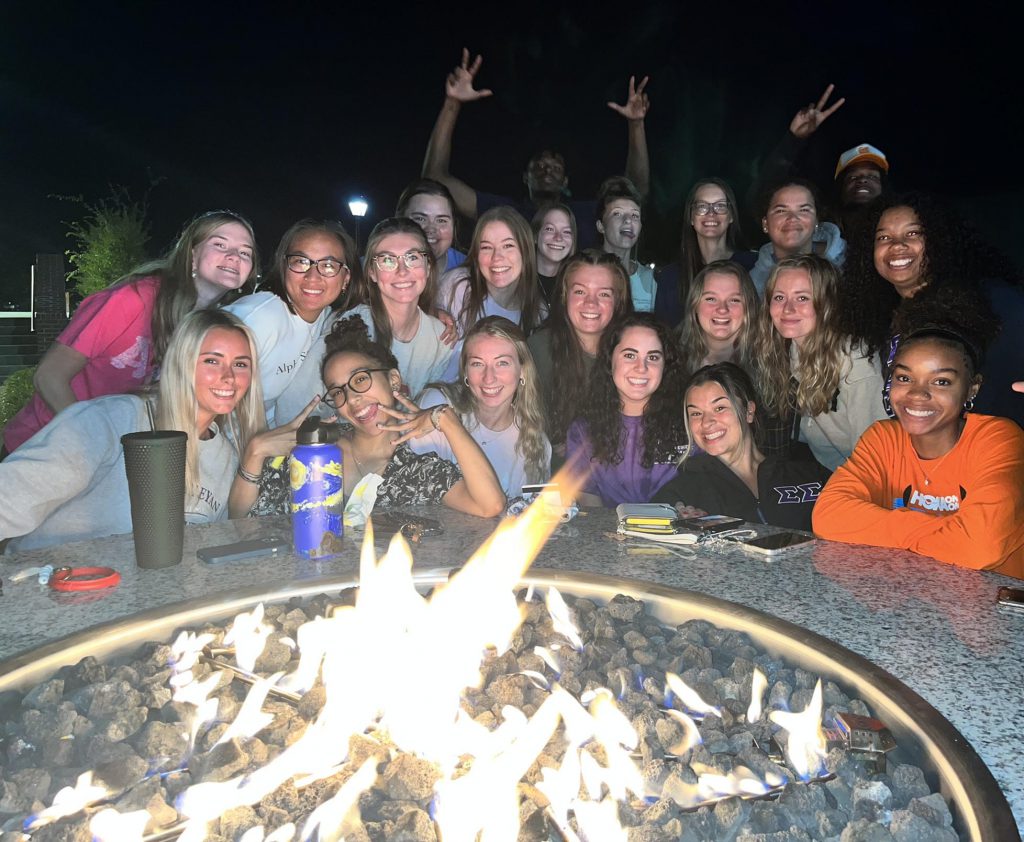Featured Image:
Mars Johnson|Marlin Chronicle
Hailey Benders|Marlin Chronicle
Natural light in classrooms is a popular topic in plenty of academic settings. On campus, there are several examples of buildings with great natural lighting and some that offer less natural lighting.
One such building that offers large amounts of natural light is the Greer Environmental Sciences Center. This building boasts many features that make it sustainable, such as a geothermal system for heating and cooling, photovoltaic panels and an array of native plant life incorporated into the landscaping around the building. The front of the building is covered in floor-to-ceiling windows, thus reducing the amount of electricity being used.
Aside from the many windows on the front of the building, all of the classrooms boast large windows as well. Dr. Maynard Schaus is a professor of Biology and Environmental Sciences as well as the director of Accreditation and coordinator of Sustainability Management. In 2015, during the initial construction of the Greer Environmental Sciences Center, Schaus served on the design team. The building follows a theme of what Schaus described as “science on display.”
This relates to another unique feature of the building. The lab areas in the building all have windows surrounding them. This lets in natural lighting to the labs, which would otherwise be lit only by synthetic lighting due to the central location of the lab areas.
During the design, VMDO Architects, an architectural firm in Charlottesville with a focus on sustainable designs, highly encouraged the large amounts of natural light. Schaus commented that the light gives the building a “welcoming and inviting” feeling, and it allows students and faculty working and studying in the building to have a stronger “connection to natural areas” that are just outside the glass.
Schaus, who previously had an office in Blocker Hall, expressed that buildings with large amounts of natural light, such as the Greer Environmental Sciences Center, certainly have their perks when put up against buildings with less natural light. Schaus shared that if the electricity goes out in buildings such as Blocker Hall, students and faculty have to rely on the emergency lighting that sometimes doesn’t last long. Buildings such as the Greer Environmental Sciences Center do not have to rely on emergency lighting because of the large amounts of natural light.
Jason Seward, Associate Vice President for Campus Life and Operational Management, also spoke about natural lighting in some of the buildings on campus. While Seward said that there are no plans to renovate or redesign some of the buildings with little natural lighting, he did say that “the focus moving forward on new construction is that we follow suit with what we’ve done in recent construction builds with the use of natural light.” One example of this is the new addition to the Blocker Youth Center which has “huge windows,” which allow for “a ton of natural light.”
While the natural lighting aspects of many of the buildings on campus are aesthetically pleasing and good for sustainability purposes, many students also like to take advantage of these areas to study and work on assignments outside of class. First-year Ava Gerstemeier said she likes to study “typically somewhere with lots of light. I like to study in the library, in the study room, because there is lots of glass.”
Gerstemeier is not the only student with this opinion. Students can be found at all hours of the day working hard in places such as the Greer Environmental Sciences Center and the H. C. Hofheimer Library due to the large amounts of natural light.
Gerstemeier said that she feels more productive in spaces with natural light, a sentiment which Schaus expressed is not a universal feeling.
When asked about students’ productivity in the classroom with large amounts of natural lighting versus little natural lighting, Schaus said that if there was any difference, it was “unclear.”
“I don’t want to speculate,” Schaus said.
Although there may not be any direct relationship between natural lighting and the productivity of students, natural lighting is still a favorite of many students and staff. Not only is the natural lighting aesthetically pleasing, it also has many benefits and can make buildings more sustainable.
“When we look to new buildings or new construction, whenever we have an opportunity to further commit ourselves to our sustainability efforts, then it’s something that warrants our attention,” Seward said.
Although there are many unknowns, VWU hopes to incorporate more natural lighting into campus buildings and classrooms in the future.
By Calee Lukowski


